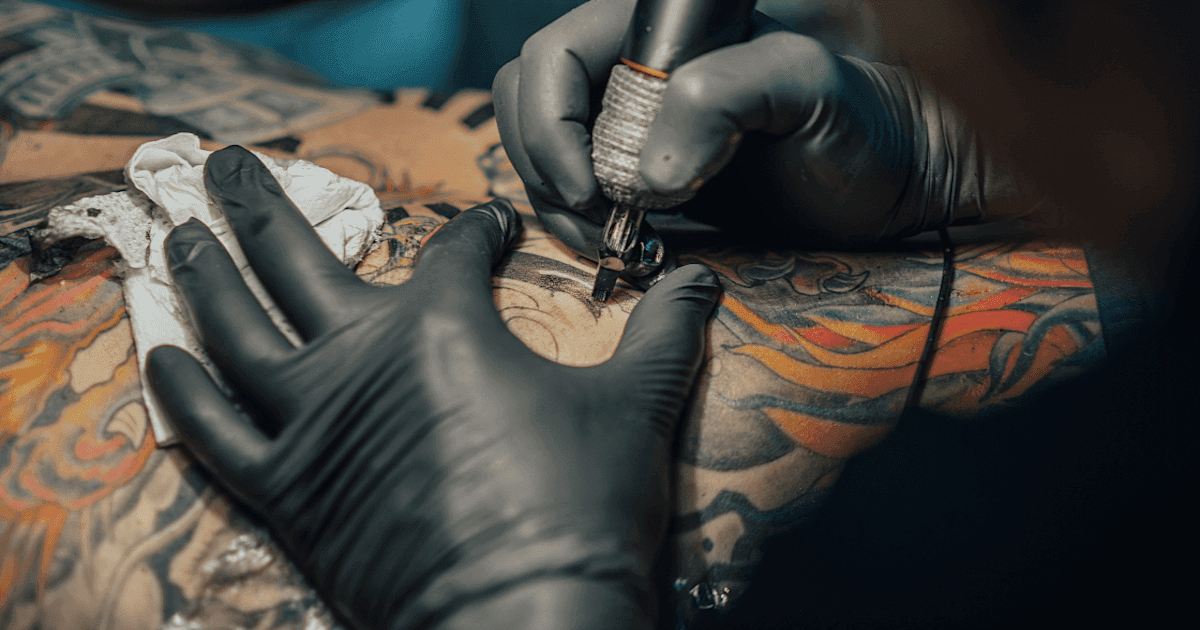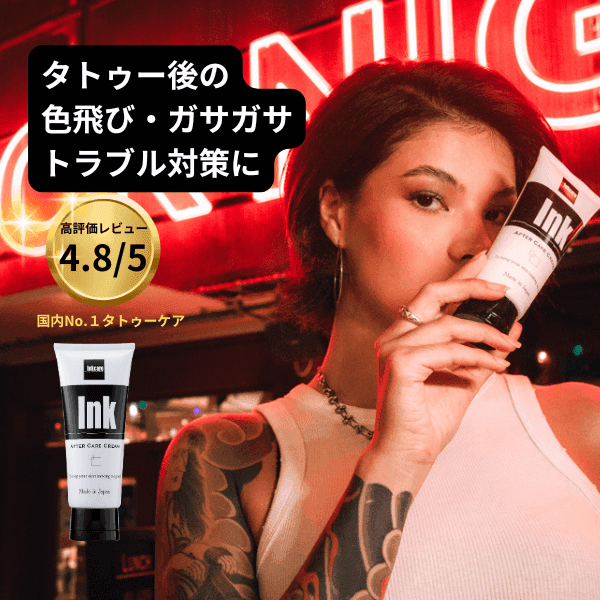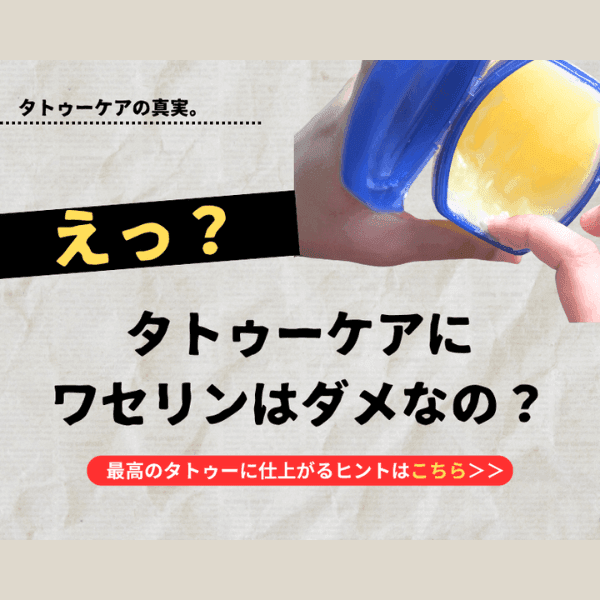
What Is the Difference Between Tattoos and Irezumi?
Tattoos and irezumi both refer to the act of inserting pigment into the skin, but their differences are often unclear and easily confused.
This article offers a thorough explanation of the differences between tattoos and irezumi, covering the meanings and origins of the terms, design styles, application methods, and differences in pain.
By understanding their historical and cultural backgrounds, you can gain a deeper appreciation of tattoo culture as a whole.
Are There Differences Between Tattoos and Irezumi?
In conclusion, there is little to no fundamental difference between tattoos and irezumi—they are essentially synonymous.
According to Kojien (a prominent Japanese dictionary), "tattoo" is defined as equivalent to "irezumi," and over time the meanings and terminology have become nearly unified.
In modern Japan, small fashion-conscious or Western-style designs are often called "tattoos," while traditional Japanese full-body or large-scale designs are referred to as "irezumi."
There's also a common impression that irezumi involves slightly deeper needle insertion, resulting in more three-dimensional, complex finishes, while tattoos tend to be more surface-level and flat.
However, these differences are mostly based on general perceptions. Technically, there's little distinction.
So, while "tattoo" and "irezumi" mean the same thing, there are subtle differences in design, cultural context, and connotations.
Word Meanings and Origins: Tattoos vs. Irezumi
Tattoos and irezumi can carry different meanings depending on their linguistic and historical origins.
"Tattoo" is a loanword, while "irezumi" is a traditional Japanese term—an important factor in understanding their distinctions.
Below, we break down the differences in meaning and origin for both terms.
Meaning and Origin of "Tattoo"
The word "tattoo" originates from the Polynesian languages, especially the Tahitian word "tatau," which means "to strike."
Similar terms exist in Samoan and Marquesan languages, all referring to actions like "marking" or "hitting."
Historically, tattoos were not applied with modern machines, but with sticks tipped with needles that were tapped manually to insert pigment into the skin.
Meaning and Origin of "Irezumi"
The word "irezumi" comes from the idea that ink, when inserted into the skin, appears bluish—hence the characters for "insert" (ire) and "blue" (zumi).
This term gained popularity after being used in the Meiji-era novel "Irezumi" by author Junichiro Tanizaki.
As an old Japanese word, irezumi is deeply rooted in traditional body art, ritual practices, and social symbolism throughout Japanese history.
Design Differences Between Tattoos and Irezumi
Tattoos and irezumi also differ in their design characteristics.
Tattoos often feature small, casual designs, while irezumi typically showcases traditional Japanese motifs.
Here, we highlight the differences in design styles.
Tattoo Design
Tattoo designs are highly diverse, ranging from simple one-point tattoos to colorful pieces and even anime elements.
They can include text, animals, flowers, geometric patterns, and more—many of which are especially popular among women.
Recently, watercolor-style shading and minimalistic designs have gained popularity.
Tattoo design styles have continuously evolved over time, always adapting to new artistic trends.
Irezumi Design
Irezumi designs primarily feature traditional Japanese motifs such as dragons, tigers, koi fish, phoenixes, cherry blossoms, peonies, and autumn leaves.
Each element holds symbolic meaning: dragons signify power, koi represent success, and cherry blossoms symbolize beauty and transience.
Irezumi is often hand-poked rather than machine-applied, which showcases the tattoo artist's mastery through precise lines and vivid colors.
Application Methods: Tattoos vs. Irezumi
Tattoos and irezumi also differ in how they are applied and what tools are used.
Let’s look at the distinctions between tattoo machines and hand-poking techniques.
Tattoo Application Methods
Tattoos are typically applied using a tattoo machine equipped with fine needles.
These needles move rapidly up and down to inject pigment into the skin.
Artists adjust needle types, pigment density, and insertion depth depending on the design.
Tattoo machines allow for detailed and vibrant artwork thanks to the speed and control they provide.
Irezumi Application Methods
Traditional irezumi often employs a hand-poking technique using a long rod (usually made of bamboo, wood, or metal) with bundled needles at the tip, called a "nomo."
This technique involves manually inserting pigment into the skin by pressing the needles.
| Technique | Description |
|---|---|
| Line Work (Suji-bori) | Outlining the design with fine needles. |
| Shading (Bokashi) | Creating gradients with ink to add depth and dimension. |
| Filling (Tsubushi) | Evenly coloring inside the design using dark ink. |
| Framing (Gakubori) / Negative Space (Nukibori) | Framing motifs or isolating them with background elements. |
| Hidden Work (Kakushibori) | Inserting secret patterns in less visible areas. |
Compared to tattoo machines, hand-poked irezumi takes more time but tends to result in deeper pigment and a unique sense of depth and texture.
Pain Differences Between Tattoos and Irezumi
Pain levels during tattoo and irezumi procedures vary depending on the individual and the body part being worked on.
In general, tattoos are considered to be less painful.
Here, we explain the differences in perceived pain.
Tattoo Pain
Pain from tattoos varies depending on the body part and personal sensitivity.
Areas with thin skin or close to bone tend to hurt more.
Tattoo machines allow for controlled needle depth, so smaller or lighter tattoos usually cause less discomfort.
To reduce pain, it's recommended to get enough rest and be in good physical condition before the procedure.
Irezumi Pain
Pain from irezumi also varies by technique and location, but is generally said to be more intense.
Hand-poking involves manually pressing needles into the skin, often causing stronger pain compared to machines.
The pain is often described as "piercing" or "burning."
If you're sensitive to pain, consult with your artist beforehand and consider taking breaks during the session.
Summary: Key Differences Between Tattoos and Irezumi
This article has explored the differences between tattoos and irezumi.
Although they are fundamentally the same, they differ slightly in origin, terminology, design, techniques, and the level of pain experienced.
When choosing between them, it's important to understand these distinctions and pick the style that suits you best.
Also, make sure to choose a skilled and hygienic tattoo artist when undergoing any kind of body art.










